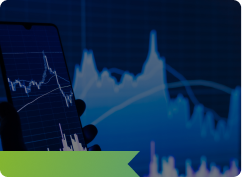Trading can be a great way to make money, but it is also important to remember that it is risky. There is no guarantee of profits, and you can lose money if you are not careful. If you are a beginner trader, it is important to choose a trading strategy that is simple, easy to understand, and has a proven track record of success.
Here are a few of the best trading strategies for beginners:
Trend following
Trend following is a simple but effective trading strategy. It involves buying assets that are in an upward trend and selling assets that are in a downward trend. Trend following can be done on any type of asset, including stocks, commodities, and currencies.
To identify a trend, you can look at the price chart of the asset you are interested in.
- If the price is making higher highs and higher lows, then the asset is in an uptrend.
- If the price is making lower highs and lower lows, then the asset is in a downtrend.
Once you have identified a trend, you can enter a trade in the direction of the trend.
Moving average crossover
This strategy uses two moving averages to identify trends and generate trading signals. The two moving averages can be any length, but the most common combination is a 50-period moving average and a 200-period moving average.
- To enter a long trade, you would buy the asset when the shorter moving average crosses above the longer moving average.
- To enter a short trade, you would sell the asset when the shorter moving average crosses below the longer moving average.
- You can also use moving averages to set your stop-loss orders. For example, you could place a stop-loss order below the most recent swing low for long trades and above the most recent swing high for short trades.
Here is an example of how to use the moving average crossover strategy to trade the S&P 500 ETF (SPY):
- Buy: SPY crosses above its 50-period moving average.
- Stop-loss: Place a stop-loss order below the most recent swing low.
- Sell: SPY crosses below its 50-period moving average.
It is important to note that no trend lasts forever. Eventually, all trends will come to an end. This is why it is important to use risk management techniques to protect your profits.
Breakout trading
Breakout trading is a more aggressive trading strategy than trend following or support and resistance trading. It involves buying assets when they break out of a trading range or pattern.
Trading ranges and patterns are areas on a price chart where the price has been trading within a certain range for a period of time. When the price breaks out of a trading range or pattern, it is a signal that the trend is likely to change.
To identify trading ranges and patterns, you can look at the price chart of the asset you are interested in. Look for areas where the price has been trading within a certain range for a period of time. These areas are likely to act as trading ranges and patterns in the future.
Once you have identified a trading range or pattern, you can enter a trade in the direction of the breakout.
For example, if the asset is in a trading range and it breaks out to the upside, you would buy the asset, you can see it from the image above. If the asset is in a trading range and it breaks out to the downside, you would sell the asset.
Which trading strategy is best for you?
The best trading strategy for you will depend on your individual risk tolerance, trading goals, and time horizon. If you are a risk-averse trader, you may want to choose a trend following or support and resistance trading strategy. If you are a more aggressive trader, you may want to choose a breakout trading strategy.
It is also important to remember that there is no one-size-fits-all trading strategy. The best strategy for you will depend on the market conditions and the asset you are trading.
Tips for beginners
Here are a few tips for beginners who are choosing a trading strategy:
- Start with a simple strategy. There are many complex trading strategies out there, but it is best to start with a simple strategy that you can understand and implement.
- Backtest your strategy. Before using a trading strategy in a live trading environment, it is important to backtest it on historical data to see how it would have performed.
- Use a demo account. Once you have backtested your strategy and feel confident in it, you can start trading with a demo account. A demo account uses virtual money, so you can practice trading without risking any real money.
- Start small. When you start trading with real money, it is important to start small. This will help you to minimize your losses if you make a mistake.
It is also important to remember that trading is risky.
Good Luck!


















